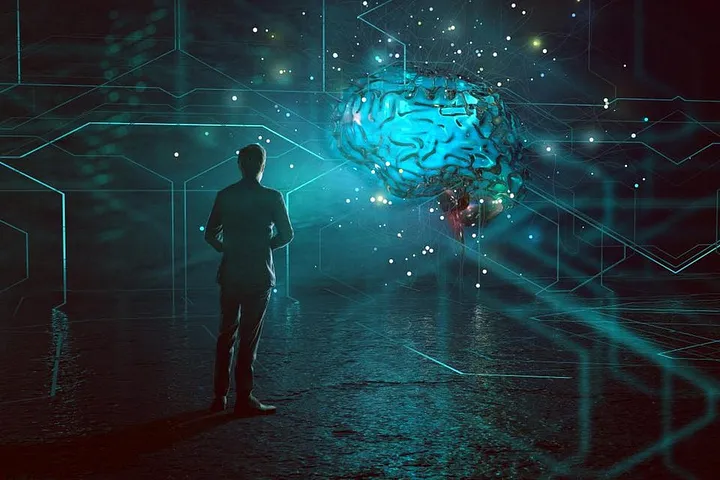What is the future of AI and living avatars?

The future of AI and living avatars is an active area of research and development, and predictions for its potential advancements vary. Some experts believe that AI will continue to evolve and become increasingly integrated into our daily lives, potentially leading to advancements in fields such as healthcare, transportation, and automation. Others anticipate that AI will become more human-like, with capabilities such as emotional intelligence and creativity.
Living avatars, which are digital representations of real people, have been proposed as a way to enhance communication and social interactions in the future. They could be used for teleconferencing, virtual reality, and other applications where face-to-face interactions are not possible. Some experts predict that avatars will become more advanced, with increasingly realistic appearances and abilities to mimic human expressions and movements.
However, it’s important to note that these predictions are based on current trends and research, and the future of AI and avatars is subject to change as technology and society continue to evolve.
Some specific predictions for the future of AI include:
- AI-powered personal assistants will become more common, with the ability to understand natural language and perform a wider range of tasks.
- AI will be used to analyze large amounts of data in fields such as healthcare and finance, leading to more accurate predictions and better decision-making.
- AI will be used to create more realistic and interactive virtual worlds, potentially leading to new forms of entertainment and communication.
- AI will be used to create autonomous systems such as self-driving cars and drones, leading to increased efficiency and safety.
- AI will be used to create digital twins, which are digital representations of physical objects and systems, allowing for better monitoring and control of industrial processes.
As for living avatars, some possible applications include:
- Virtual reality and augmented reality experiences will become more immersive with the use of avatars.
- Avatars will be used for telepresence, allowing people to communicate and interact in real time from remote locations.
- Avatars will be used for virtual therapy and counseling, providing more accessible and convenient treatment options.
- Avatars will be used for digital human representation in entertainment, advertising, and other industries.
- Avatars will be used in social media, online gaming, and other platforms that require human interaction.
Where we could use AI and living avatars in usual life in the feature?
Artificial intelligence and living avatars have the potential to be used in a variety of areas in everyday life in the future. Some examples include:
- Virtual assistants: AI-powered virtual assistants, such as Amazon’s Alexa or Google Assistant, could become even more advanced, allowing them to converse more naturally and perform more tasks. Living avatars could be used to make these interactions more human-like.
- Customer service: Companies could use AI-powered living avatars to interact with customers, answering questions and providing assistance in a more personal and engaging way.
- Education: AI-powered tutors and living avatars could be used to provide personalized instruction and feedback to students, making education more effective and engaging.
- Healthcare: AI-powered virtual doctors and living avatars could be used to diagnose and treat patients remotely, making healthcare more accessible and efficient.
- Social interaction: Living avatars could be used to create a more engaging and human-like social experience in virtual reality environments, such as virtual worlds or online games.
Overall, AI and living avatars can be used in a number of ways to improve the quality of life for people. As technology continue to advance, we can expect to see more and more applications of these technologies in everyday life.
—
It’s important to note that these predictions are based on current trends and research, and the future of AI and avatars is subject to change as technology and society continue to evolve. Additionally, there are concerns about the potential ethical and societal implications of these advancements, such as job displacement and privacy concerns. As such, it’s important to keep an eye on the developments in these fields and to have an open dialogue about how to best manage the benefits and challenges that come with them.
Similar Posts
Artificial intelligence
Artificial intelligence
Our AI algorithm came through a combination of mindfulness, psychology, neurophysiology and coaching. We created the technology based on studies of the human brain, psychics and consciousness and brought this knowledge to the mathematical model. Let’s take a closer look at what Nova is.
Artificial intelligence
The concept of Artificial Intelligence has been around for decades, and recent advancements have made it easier to create powerful machines capable of performing complex tasks. However, for AI to truly reach its potential, it must be able to go beyond simply processing data and formulating conclusions; it must be able to intuit from data and reach meaningful conclusions. This is where AI based on intuition comes in.
Artificial intelligence
Artificial intelligence
Generative AI, or artificial intelligence, has been revolutionizing the way we create content for many years now. But what is generative AI, and how does it benefit us? How is it being used in business, and how will it revolutionize content creation? Let’s take a closer look.